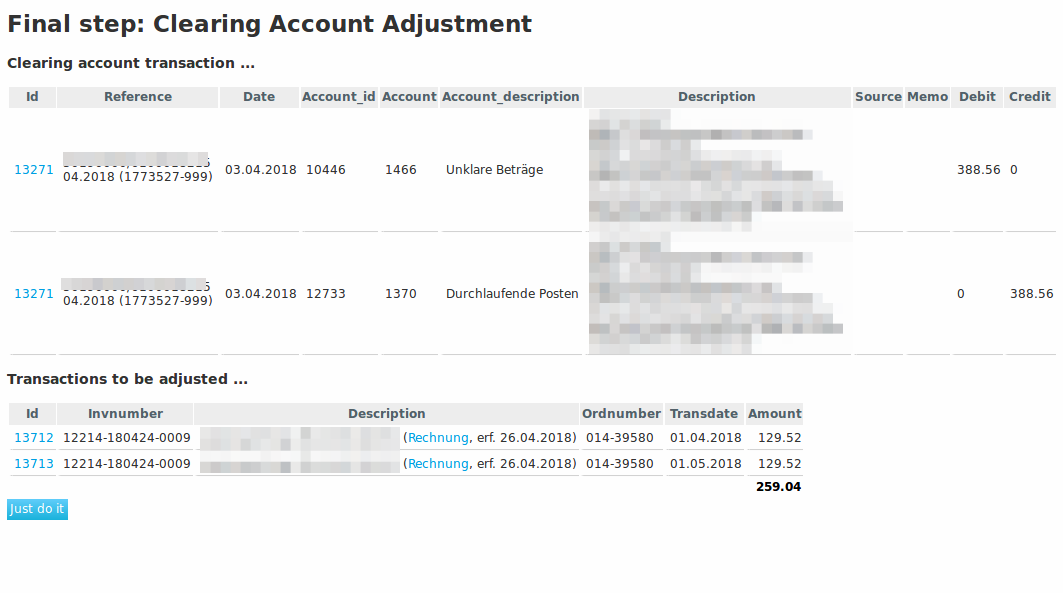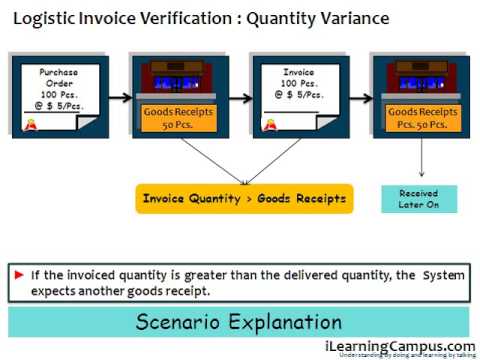The Difference Between a Suspense Account and a Clearing AccountInformation is stored in a ledger account with beginning and ending balances, which are adjusted during an accounting period with debits and credits. Individual transactions are identified within a ledger account with a transaction number or other notation, so that one can research the reason why a transaction was entered into a ledger account. Transactions may be caused by normal business activity, such as billing customers or recording supplier invoices, or they may involve adjusting entries, which call for the use of journal entries.
What is AP clearing account?
A clearing account is usually a temporary account containing costs or amounts that are to be transferred to another account. An example is the income summary account containing revenue and expense amounts to be transferred to retained earnings at the close of a fiscal period.By keeping individual payroll checks in a separate account, companies can generate reports specific to payroll, making certain tasks, such as reconciling payroll tax accounts, easier. Reports do not include all of the transactions that appear in the main account, which are typically much more numerous than payroll transactions. Furthermore, since the payroll clearing account is a zero-balance account, any outstanding checks or discrepancies are easier to identify. A payroll clearing account also offers an additional layer of protection for the operating account from illicit activities.Most business suspense accounts involve receivables and payables, like the examples above, but there are also other uses for suspense accounts. Some banks will not apply partial payments to customer mortgage accounts because of doubt as to the proper amounts to apply to principal, interest, and escrow. In these cases, they will hold the partial amount in a suspense account until the customer remits the remainder of the payment. Brokerage firms also use suspense accounts to park client funds after securities are sold and the client isn’t sure about what to do with the proceeds.
Most WantedIFRS Terms
Payroll checks bearing this account number are printed and issued to employees, or direct deposits are processed against the clearing account. Once the total net cash needed to cover payroll is known, the company transfers funds from its main operating account to the clearing account. This must be done prior to releasing payments to ensure employees will be able to cash their checks or receive their direct deposits on time. The Reserve Banks perform these services as fiscal agents for these entities. Securities are safekept in the form of electronic records of securities held in custody accounts.

Clearing Accounts
The ACH is also used by businesses to concentrate funds at a primary bank and to make payments to other businesses. In 2003, the Reserve Banks processed 6.5 billion ACH payments with a value of $16.8 trillion.The Automated Clearing House (ACH) is an electronic payment system, developed jointly by the private sector and the Federal Reserve in the early 1970s as a more-efficient alternative to checks. Since then, the ACH has evolved into a nationwide mechanism that processes credit and debit transfers electronically. ACH credit transfers are used to make direct deposit payroll payments and corporate payments to vendors. ACH debit transfers are used by consumers to authorize the payment of insurance premiums, mortgages, loans, and other bills from their account.Securities are transferred according to instructions provided by parties with access to the system. In 2003, the Fedwire Securities Service processed 20.4 million securities transfers with a value of $267.6 trillion.Sometimes, amounts or costs are put into a clearing account and then those respective payments are moved or transferred into a more appropriate account afterward. Clearing accounts are also used to verify the ongoing amounts of expenses and income. Both of these amounts are recorded in a timely manner so that the accounting is as accurate as possible. There can be confusion between a suspense account and a clearing account.

However, this is a general misconception, and these two are very different accounts. This account is opened when there is a difference in the debit and credit side of the trial balance, and the two balances are not matching. This account reports the balances that are greater with the nature of the balance, which helps the accountants in finding the errors and omissions in the trial balance and correct them. Contrary to that, a clearing account is just an account that is used for the reporting purposes. Either this account can be opened to report on some transaction that is not completed yet, or it can be used to report on some management issue.
- Most of the payments making up the transactions flow between several banks, most of which maintain accounts with the Federal Reserve banks.
- The Federal Reserve therefore performs an intermediary role, clearing and settling international bank payments.
- Prior to the completion of the clearing, the banks settle payment transactions by debiting the accounts of the depository institutions, while crediting the accounts of depository institutions receiving the payments.
By transferring only the net payroll, companies limit the amount of funds to which a criminal might gain access. Scheduled bill payments, including those scheduled for future dates, will sync to the Bill.com Money Out Clearingaccount in your accounting system. When the sync runs on or after the process date, we’ll create a Funds Transfer journal entry, which posts a debit to the Clearing account, and a credit to the Checking account.
AccountingTools
Depository institutions can also use a correspondent relationship with a Fedwire participant to make or receive transfers indirectly through the system. The Department of the Treasury, other federal agencies, and government-sponsored enterprises also use the Fedwire Funds Service to disburse and collect funds. In 2003, the Reserve Banks processed 123 million Fed-wire payments having a total value of $436.7 trillion. Typically, a payroll clearing account is a separate bank account with a distinct account number.
International Financial Reporting Tool perfect reporting according to IFRS
Opening balances are most important when a company finishes an accounting year, and ends up with a closing balance – the last balance in the accounts. This balance is carried forward to the new financial year accounts and then becomes the opening balance – the first entry in the new accounting period.Both can be of less significance and may depend upon their balance sheet or bookkeeping affairs of their owners. Suspense accounts can, in a way, be known as interoffice or clearing accounts. The basic difference between a suspense account and a clearing account is that a clearing account is zeroed out. Whereas, in the case of a suspense account, they are temporary holding accounts in which accounting is carried out until they can be identified and their disposition to a particular proper account is made. A clearing account is a general ledger account that is used to temporarily aggregate the amounts being transferred from other temporary accounts.
Use a Suspense Account for Questionable Transactions
The Fedwire Funds Service provides a real-time gross settlement system in which more than 9,500 participants are able to initiate electronic funds transfers that are immediate, final, and irrevocable. Depository institutions that maintain an account with a Reserve Bank are eligible to use the service to send payments directly to, or receive payments from, other participants.

When to use suspense accounts
After your bills are paid, we sync the bill payments back to your accounting software, and link them to their bills. By syncing them to the Clearing Account, rather than your bank account register, you can reconcile easily, without having to match the lump sum withdrawal to multiple transactions.
Intuit, QuickBooks, QB, TurboTax, Proconnect and Mint are registered trademarks of Intuit Inc. Terms and conditions, features, support, pricing, and service options subject to change without notice.
Most of the payments making up the transactions flow between several banks, most of which maintain accounts with the Federal Reserve banks. The Federal Reserve therefore performs an intermediary role, clearing and settling international bank payments. Prior to the completion of the clearing, the banks settle payment transactions by debiting the accounts of the depository institutions, while crediting the accounts of depository institutions receiving the payments.
Where is clearing account on balance sheet?
A clearing account is usually a temporary account containing costs or amounts that are to be transferred to another account. An example is the income summary account containing revenue and expense amounts to be transferred to retained earnings at the close of a fiscal period.
